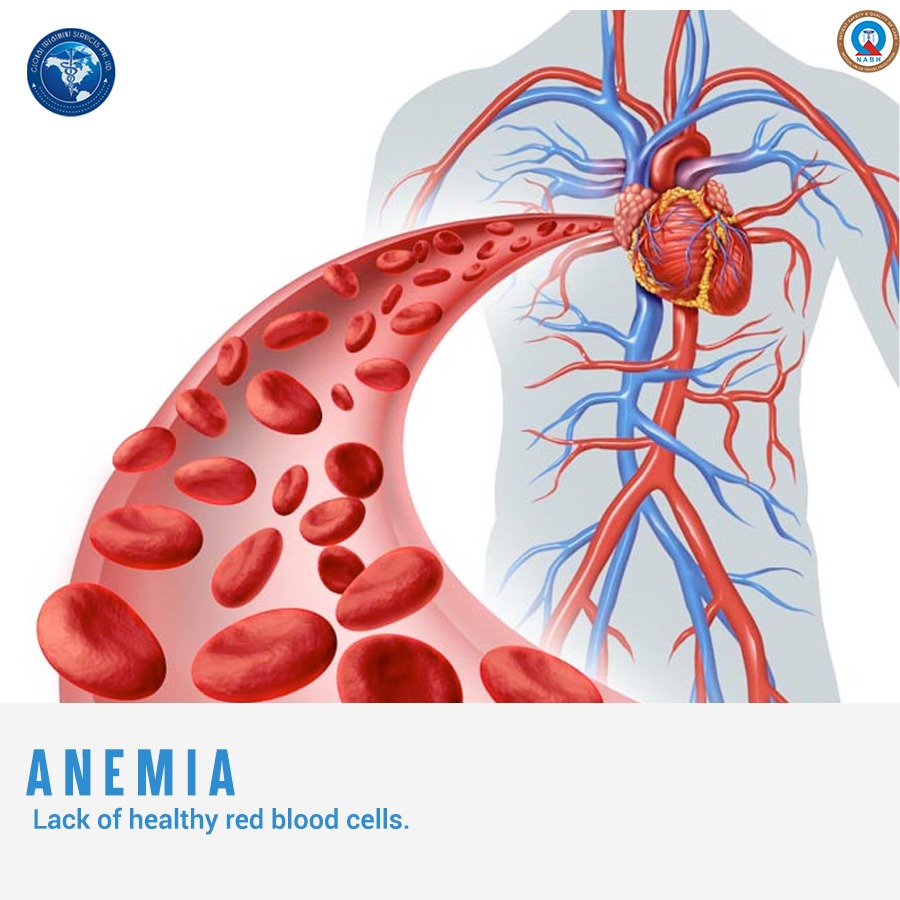Anemia is a very common blood disorder wherein the body lacks healthy red blood cells or hemoglobin. This condition leads to insufficient supply of oxygen to body tissues. It affects all age groups and pre school children are at a higher risk of this disorder. It can be temporary or long term. The treatments for anemia vary depending on the severity of the condition. There are different types of anemia described. Though symptoms of all types of anemia are mostly the same, some types of anemia have specific symptoms as well.
SYMPTOMS
- Lack of energy, feeling f tired and weak
- feeling of fatigue
- headache and chest pain
- paleness of skin
- fast and irregular heart beat.
- Dizziness
- Cold hands and feet
- Shortness of breath
CAUSES
A person can be anemic due to various reasons. It can occur due to decreased production of red blood cells, blood loss, destruction of red blood cells etc. The cases of anemia are specific to the types of anemia.
TYPES AND TREATMENTS
- Iron deficiency anemia: Iron molecules are associated with hemoglobin that carries oxygen to body tissues through blood. Lack of iron caused due to blood loss , heavy menstrual bleeding, ulcer, cancer etc leads to lack of hemoglobin production. This type is very common in pregnant women without iron supplementation. The treatment includes iron supplementation.
- Vitamin deficiency anemia: Apart from iron body requires folate and vit B-12 for the production of healthy red blood cells..Therefore lack of this vitamin can lead to vitamin deficiency anemia.It is also called pernicious anemia. The symptoms include irritability, diarrhea, and a smooth tongue. Treatments include dietary supplements and B-12 shots
- Aplastic anemia: It occurs when the body doesn’t produce enough red blood cells. It is caused by infections, certain medicines, autoimmune diseases and exposure to toxic chemicals. The specific symptoms include fever, frequent infections, and skin rashes. The treatment includes blood transfusions or bone marrow transplantation.
- Anemia of chronic disease: Diseases such as cancer, HIV/AIDS, rheumatoid arthritis, kidney disease, Crohn’s disease and other chronic inflammatory diseases can decrease the production of red blood cells.
- Anemia associated with bone marrow disease: Blood production in the bone marrow is affected by diseases such as leukemia and myelofibrosis. It can cause anemia.
- Hemolytic anemias: It occurs when red blood cells are destroyed faster than bone marrow can replace them. The symptoms include jaundice, dark colored urine, fever, and abdominal pains.
- Sickle cell anemia: This is an inherited hemolytic anemia. It’s caused by a defective form of hemoglobin that forces red blood cells to assume an abnormal sickle shape. These irregular blood cells die prematurely, resulting in a chronic shortage of red blood cells. Thesymptoms include painful swelling of the feet and hands, fatigue, and jaundice. Treatment includes oxygen therapy, pain relief, and intravenous fluids. There may also be antibiotics, folic acid supplements, and blood transfusions.


Post a comment